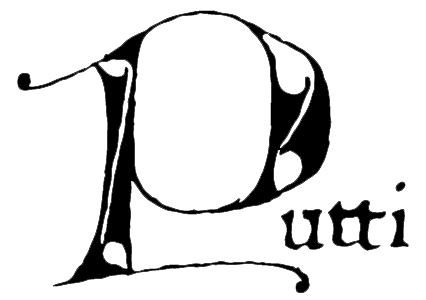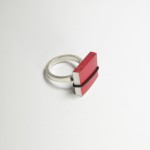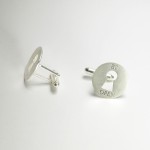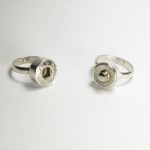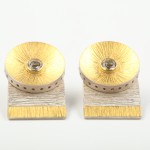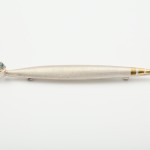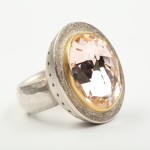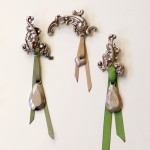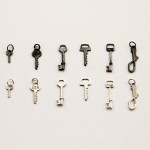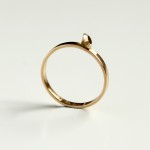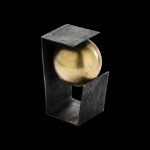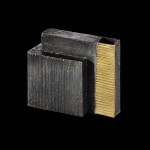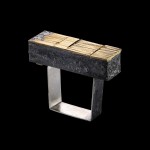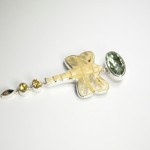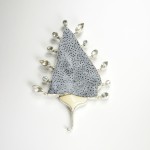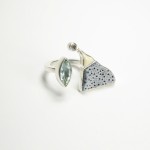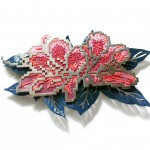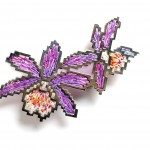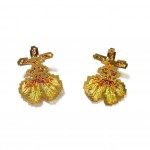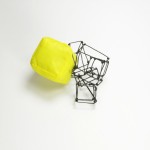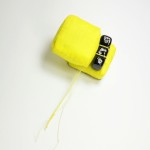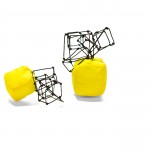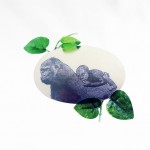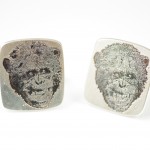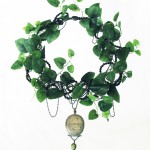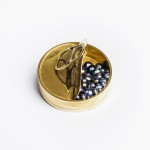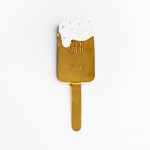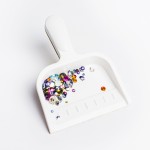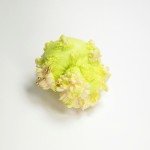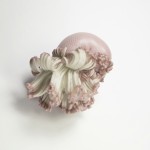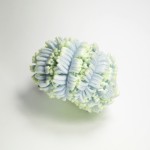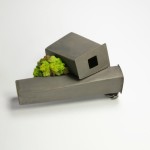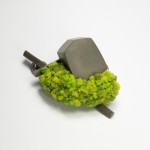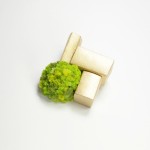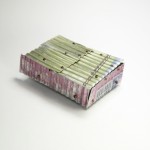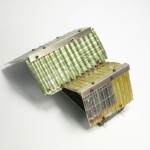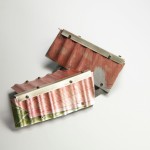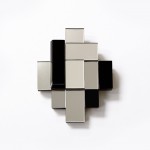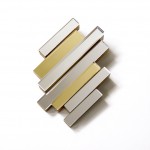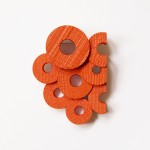
- This event has passed.
WHITE HORSE IN A GREEN MEADOW
June 22, 2015 - September 4, 2015

From June 22 until September 4, 2015
at Art gallery PUTTI
Contemporary jewellery exhibition
WHITE HORSE IN A GREEN MEADOW
Summer exudes warmth like quiet heartbeats. There is a desire to fall into the soul of dandelion fluffs and feel the love of wind. The blue, blue sky moves above heads like ocean. Moon beams in the calm river waters. Summer dances in the rhythm of river depths. Storks fly over the garden give us their blessing. White horses wander in the meadow in the early morning. Summer shines forth through the horse`s wise eyes. All is us.
Different Latvian and international contemporary jewellery artists participate in the exhibition “White horse in a green meadow”: Guntis Lauders (Latvia), Māris Auniņš (Latvia), Māris Šustiņš (Latvia), Valdis Brože (Latvia), Andris Lauders (Latvia), Gigi Mariani (Italy), Reka Lorincz (Hungary), Heng Lee (Taiwan), Julia Maria Kunnap (Estonia), Asa Elmstam (Sweden), Ana Cardim (Portugal), KIRAYURINA (Japan), Yuki Sumiya (Japan), Ying-Hsiu Chen (Taiwan), Yung-Huei Chao (Taiwan), Kirsty Pearson (England), Lena Lidahl (Sweden).
Ana Cardim (Portugal)
In my work as an artist I have mainly opted to explore the mobility of body adornments, developing their potential as a platform for sociability and place of discussion. The objects generated by this creative process can be seen as interaction micro devices, which stimulate dynamic dialogues – creating and recreating critical opinion in the public sphere. In aesthetic terms, these objects transgress the common function of body adornments and acquire a political value. They are thus vehicles of social intervention, whose purpose is to catalyze a redistribution of meanings, and propose new ways of making sense in its different social and environmental aspects.
Andris Lauders (Latvia)
My works – functional jewellery is made of silver, with gold additions. The technique implies that first, from gold and silver plates an ornament is created, and heat is applied from below. Since gold has a higher melting temperature than silver, the hard gold plates can sit into the softer silver plates thus fixing the ornament design. Smaller pieces of jewellery are initially formed in wax and then cast. The largest – made of components and brazed together, leaving a hollow middle. This reduces the weight of jewellery and allows it to be worn daily. Mammoth bone is cut, carved and put into his jewelry, but with the help of silver wire additional dotted accents or other ornaments are formed.
The presence of historicism is presented in my works. However, from all cultures, the ancient Egyptian jewellery has the dominant effect here. My jewellery traditionally has a narrative, but handwriting is developing in the direction of simplicity. Simple geometric shapes are mainly used in my artworks.
Asa Elmstam (Sweden)
I value quality and craftsmanship highly. I am fascinated by the traditional techniques of silversmithing, but always trying to find new ways and good solutions for constructions. I often start from a metal sheet, with sawing and soldering as my main techniques.
I often see my work as a medium to highlight the difficulties in society that I am passionate about to change. I use my work as an influence in a positive direction.
Gigi Mariani (Italy)
My work has a design and an informal basis.
I try to transfer everyday emotions into my jewellery in a spontaneous way.
I use the jewel as a painter uses a canvas to express his feelings.
Each work tells the story of a life, of love, identity and quest.
This contrast between geometric form and material texture allows me to develop works that are unique and sculptural, in which niello is the pictorial material applied to canvases of silver and gold.
Guntis Lauders (Latvia)
There are no specific national features in my works – they are open to the world.
I don’t especially try to find symbolic elements – they just come to me. During my studies I have absorbed many impressions from other cultures.
Nature influences me the most. I like cutting the grass. In summer I go to the countryside. I don’t work there but gather a huge luggage of information. It all gets mixed in my head and finds expression in my jewellery later.
Heng Lee (Taiwan)
In the ´Floral embroidery – Pixels´ series, I have enlarged the embroidery pattern which surfaced in Photoshop as a decorative garment on a dress. By magnifying the image, pixels of the pattern weakened, and became similar to a mosaic image. As the image was magnified, the borders went out of focus, leaving hand-embroidery to be the highlight of it all.
I mixed stitching methods, richer and more delicate colors to highlight the flowers and the beauty of embroidery.
Julia Maria Kunnap (Estonia)
We are living at the time when everyone ceaselessly has something to say, when everyone has a message, a statement, at least a comment. I want to experience and to reflect. No words, no sound, only the smell of falling water. If one watches, touches and squeezes a crystal far too long, the fingerprints will get deep enough to be noticed. As much as I am fond of the symmetry of crystals, I am fascinated about the idea that these crystals can never melt in the way I carve them. All my works have been made in a simple way – just grinding and polishing, sometimes a bit of gold is added to attach the stone to a wearer.
Kirsty Pearson (England)
Black and yellow combined are signs of warning, a call for awareness that is often overlooked. My initial inspiration has been observing these traces on the streets.
I am creating stark composition on paper which is then translated into jewellery, the raw expression of my drawings provides a base from which a refinement in objects can be cultivated.
Lena Lindahl (Sweden)
We are all animals. Individuals of a remarkably successful species. The history is not long, our 200 000 years is considered as a blink of an eye in evolutionary terms. But if we play our cards well there will be humans walking around on the Earth for many years to come. Cooperation, compassion and an exceptional clever mind have all been winning qualities on the evolutionary road. My jewellery art is about the kind of human animals we are today and the individuals who went before us. It was their lives, thoughts and struggle that cleared the way for us and we would not be an existing species without them. We carry their traces in our DNA. I explore humanity. Even if we know more than ever about our history we know less than ever about what is next.
Māris Auniņš (Latvia)
Until I get the desired result, there is a lot of dust, chippings and mess. That’s the way how these stones are born – each of them is unique, I wouldn’t be able to cut another one the same way. Sometimes when I start polishing the stone I have no idea what will come out of it at the end.
Unexpected patterns that appear in the polishing process are great – that’s the essence of the nature.
This time is my time but who knows, maybe after 500 years my works will be regarded ethnographic.
Māris Šustiņš (Latvia)
My favourite material is silver – It is fabulous! Silver is always the same – today or a thousand years ago. I add gold to compositions to make them “tastier”. Usually there are no straight geometrical shapes, lines, or angles in my jewellery, works are plastic, close to natural shapes.
I like to work in wide amplitude – from the most delicate jewellery pieces to large metal forms.
Reka Lorincz (Hungary)
Jewellery design means the interpretation of today’s world to me. A sort of communication between the outside world and that of my own. Making the invisible visible.
Through my jewels I am contemplating the tangled variety of the universe. Heaps of emotions and thoughts pass through my mind through the impulses of the environment which I examine and turn them into objects.
I am intrigued by the street. What exactly means what I see.
Through my objects I mainly tried to reflect the difference between that of the shown and the real world which can sometimes look appealing, fake or even dangerous.
Valdis Brože (Latvia)
I work with colour. Sometimes I juxtapose rather risky tones. Why? Maybe it is because of our climate and the grayness around. Colours add joy to my jewellery.
I don‘t create similar items. I like to come up with new ideas all the time. Only some elements, details can look alike in one jewellery collection.
I have spent a lot of time studying books of anatomy in order to know better the human hand. This knowledge is needed when making two finger rings.
Of course, I am influenced by the things around me but I even cannot name my favourite artists. I like lots of different things.
Ying-Hsiu Chen (Taiwan)
Since I was little, I have been to the beach very often. I am fascinated with the sea creatures’ shapes, colors, surface patterns, and how they grow and move. German writer Johann Wolfgang Von Goethe once said, “Art does not aim to compete with nature in breadth and depth. Instead, art intends to return to nature with a second nature, a felt, thought, and perfect nature based on man.” Learning from nature by observing natural images familiar to me, I transfer the spirit and characteristics of nature to my works, then further converting the images into concrete expressions so as to construct the scenes in my heart, and create another kind of nature to return to nature, embodying the spirit described by Goethe.
Yuki Sumiya (Japan)
In the ‘Garden’ series, I’m principally experimenting with the ideal relationship between man and nature. When I see this, for example in the synthesis of the natural and man-made in a beautiful garden, where the gardeners have thinned out the cedar trees, erected fences incorporating the original trees, and also sown lawns interspersed with concrete surfaces, the perfect balance that can be achieved between nature and human intervention moves me.I want to ask, “How can we, man and nature, co-exist?”
Yung-Huei Chao (Taiwan)
The action of human behavior adding elements on housing and dwelling over time transforms the original spacing into a new form; the idea is then converted into my thoughts on space and structure for wearable pieces.
KIRAYURINA (Japan)
I think that the appeal of jewelry as an accessory that can be worn comes from the sense of presence that it conveys, no matter what size it is, and from the ability that it has to give people a positive feeling, both visually and mentally.
It seems somehow more apt to describe my work as tiny installations that improve feelings rather than as accessories. To express my interest from this perspective, I have created the term “OBJEWELRY” which encapsulates the vague existence of a boundary between artistic objects and jewelry, and with trial and error I am making this kind of “OBJEWELRY.”
- SONY DSC
- SONY DSC
- SONY DSC
pilsetas.lv about exhibition “White horse is a green meadow” (link)
https://putti.lv/2015/11/04/lofficiel-11-2015/
https://putti.lv/2015/06/04/riga-now-139/
https://putti.lv/2015/06/04/ok-6-june-9-july-2015/
https://putti.lv/2015/06/04/pastaiga-06-2015/
